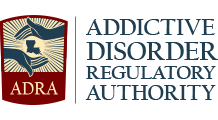Understanding the signs, symptoms, and effects of posttraumatic stress disorder is an important part of the effort to get treatment for your child. At Acadiana Treatment Center in Sunset, Louisiana, we’re proud to be a source of information and comprehensive care for adolescents who have been struggling with PTSD.
Understanding PTSD
Learn about PTSD
When someone experiences a dangerous or traumatic event, their fight-or-flight response helps protect them from harm. But people who develop posttraumatic stress disorder, more commonly known as PTSD, continue to experience that stress or fear response long after the event or situation has ended.
An adolescent may develop PTSD after experiencing or witnessing a traumatic situation. This could be any number of frightening experiences, such as abuse, sexual violence, a car accident, the death of a loved one, or a school shooting.
The symptoms of PTSD can severely disrupt a young person’s life the longer they go without treatment. But with proper, professional care, your child can start to heal from the effects of PTSD and find lasting recovery from the mental health challenges they have been battling.
Statistics
Statistics about PTSD
The National Institute of Mental Health (NIMH) and the National Center for PTSD have reported the following statistics about posttraumatic stress disorder in the United States:
- Up to 43% of children and teens experience a trauma at some point in their lives.
- About 5% of adolescents ages 13-18 have struggled with PTSD after experiencing or witnessing a traumatic situation.
- Adolescent girls (8%) are more likely to develop PTSD than adolescent boys (2%).
- Child Protective Services reports proof of abuse in about 30% of the 5.5 million cases it handles each year, including neglect (65%), physical abuse (18%), sexual abuse (10%), and psychological abuse (7%).
Causes & Risks
Causes and risk factors for PTSD
There is often a misconception that only people who have survived combat can develop posttraumatic stress disorder. However, anyone can suffer from PTSD regardless of their age or background, including adolescents. It’s important to note that not everyone who lives through a dangerous or traumatic event will struggle with PTSD, because there are many factors that play a role in whether a person develops this disorder. Some of the more common causes and risk factors for PTSD include:
- The severity of the trauma
- Exposure to previous traumatic situations or events
- Age (younger children are more prone to developing PTSD)
- Gender (females are more prone to developing PTSD)
- Having a lack of support in the aftermath of the trauma
- Experiencing childhood adversity
- Having family members who have experienced mental health challenges
Signs and Symptoms
Symptoms of PTSD
Adolescents who suffer from PTSD often display signs that are mistaken for behavioral issues. This disorder can cause a wide range of symptoms, and no one experiences PTSD the same way. But left untreated, posttraumatic stress disorder can have a devastating impact on an adolescent’s life. Some of the signs and symptoms of PTSD include:
Behavioral symptoms:
- Develops disrespectful or destructive behavior
- Acts out impulsively
- Behaves aggressively toward others
- Has angry outbursts
- Avoids places, events, or objects that remind them of the trauma
Physical symptoms:
- Has difficulty sleeping
- Is easily startled
- Is tense or agitated
- Has trouble concentrating
Mental symptoms:
- Experiences flashbacks of the trauma
- Has nightmares about the trauma
- Has trouble remembering the traumatic event
- Feels guilty or like they’re to blame for what happened
- Is unable to feel positive emotions
Effects
Effects of PTSD
For many adolescents who struggle with PTSD, the effects of this disorder do not go away on their own. But effective treatment for posttraumatic stress disorder can help your child heal from any damage they may have experienced from living with PTSD. These are some of the many ways that PTSD can have a negative impact on your child’s life if they don’t seek treatment for this condition:
- Difficulty developing trusting relationships
- Damaged relationships with friends and family
- Trouble getting schoolwork done
- Poor performance at their after-school job
- Withdrawing from social life and becoming socially isolated
- Substance abuse and addiction
- Self-harming behaviors
- Suicidal ideation
If your child has already suffered damage from posttraumatic stress disorder, there is still hope. By finding age-appropriate PTSD treatment for your child, you can help them heal from the effects of living with a mental health challenge.
Co-Occurring Disorders
Common co-occurring disorders among people who have PTSD
An adolescent who is struggling with posttraumatic stress disorder is at an elevated risk for developing other mental health disorders. When a child suffers from more than one mental health condition at the same time, this is referred to as co-occurring disorders. Mental health conditions that commonly co-occur with PTSD include:
- Depression
- Bipolar disorder
- Anxiety disorders
- Conduct disorder
- Oppositional defiant disorder
- Separation anxiety disorder
- Major neurocognitive disorder
- Substance use disorders













